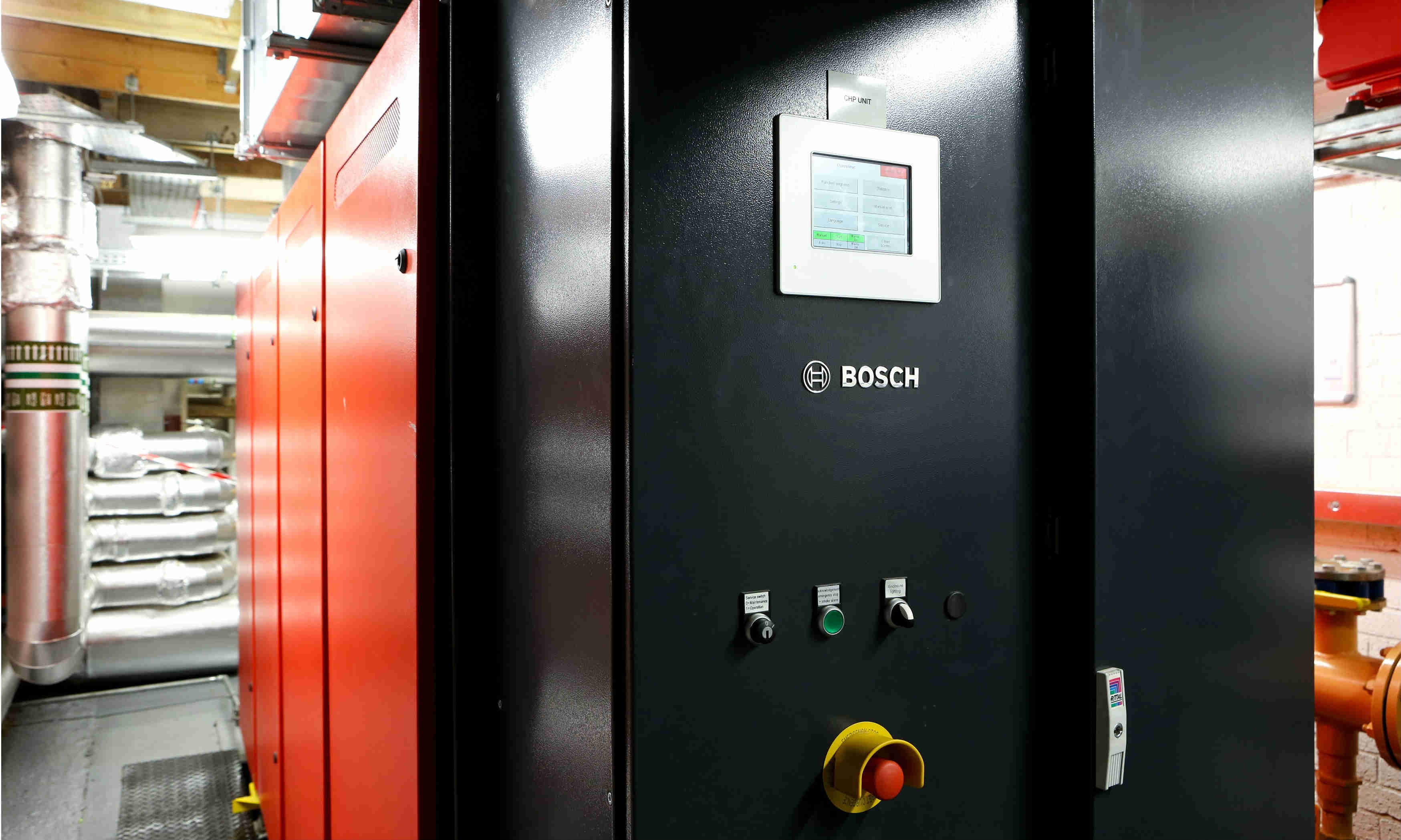UNIVERSITY CHP SYSTEMS: SIZE MATTERS
With a number of universities around the country turning to Combined Heat and Power as an effective way to cut energy costs and carbon emissions, Pete Mills, Commercial Technical Operations Manager at Bosch Commercial and Industrial, explains why it is only through correct sizing and a suitable hydraulic and control arrangement that this burgeoning technology will really perform to its potential:
In many senses, the diverse nature of a typical university’s estate makes it unlike any other. While most academic buildings will largely function during typical working hours, the usage patterns of university-owned accommodation and leisure facilities in particular mean CHP systems have quickly been identified as one of the most effective ways to reduce the CO2 emissions created by heat generation.
While the favourable emissions savings delivered by CHP have been well-documented, those responsible for the design of heating systems face many decisions at the start of a project – particularly as a CHP system can either be heat-led or electrically-led in operation. The vast majority of modern systems are heat-led, since this maximises the efficient use of a CHP module where the waste heat from generating electricity can be put to good use. In certain applications however, there are good reasons for having an electrically-led or electrically biased operation; for example when standby operation is required for important but non-emergency loads during power outages.
Compromised efficiency
In spite of design best practice, there is now evidence of many schemes where it has been decided upon to make the system purely electrically led, based on financial reasons alone, rather than from the point of view of maximising efficiency. On such schemes, heat is routinely rejected or dumped through dry air coolers to the atmosphere. It should be stressed however, that the rejection of heat should only ever be seen as a last resort.
The sheer nature of a CHP system means that even schemes which set out to reject a minimal amount of heat can find themselves rejecting more heat than required. Many opt for a system where the amount of heat rejected is controlled by a three way valve and control system, which in principle should be fine, however in practice, the reaction speed of the valve and overall control can lead to useful heat being lost to the atmosphere; thus reducing efficiency, CO2 savings and financial savings.
Whilst rejecting heat may be seen as the most financially viable option in some cases, it is a widely held view of many within the industry that this type of standard heat rejection is no longer acceptable.
As with many aspects of the design, the work put in at the early stages of a project to help ensure reliable data and assessments are made, pays off with successful projects. Correct sizing of a CHP system is essential to ensure the balance between providing useful heat and electricity, and that of maximising savings, is met. There is a temptation to push the potential gains to the maximum, but this can lead to heat being rejected or electricity frequently being spilled into the grid. Poorly designed schemes can also lead to operational difficulties and increased maintenance requirements and costs.
Of equal importance to a successful CHP scheme is a hydraulic and control arrangement that can maximise the thermal load available to the system. This is done by suitably sized thermal storage and a hydraulic arrangement that can ensure the stored thermal energy can be put to use quickly when there are peaks in demand. At the same time, back up boilers must be held off effectively until they are really needed.
It is the relationship between correct sizing and a suitable hydraulic and control arrangement, which makes or breaks a CHP scheme.
Suitable sizing at Coventry University
This is exactly what had happened at Coventry University where, during a due diligence of one of its largest boiler rooms, it became apparent that the previous CHP module was oversized, therefore not using a significant proportion of the heat produced. With the achievement of high efficiency levels and cost savings the ultimate objectives for such an arrangement, the rejection of heat was jeopardising the system’s effectiveness and had lengthened its payback period.
The heating and hot water system was also linked to a nearby student accommodation block to work as part of a district heating scheme to allow additional run hours to be utilised. As well as installing five 1,200kW cast iron boilers, the pairing of the 140kWe CHP system with a 34,000 litre thermal store would ensure any excess heated generated could be recovered and re-used the following day, further enhancing the efficiency of the system.
Further benefits
The Quality Assurance scheme for Combined Heat and Power (CHPQA) recognises the environmental and security benefits of well-designed and operated CHP schemes. Although a voluntary scheme, it offers many benefits and provides a route for further savings from Climate Change Levy (CCL) exemption, access to Enhanced Capital Allowances, and exemption of plant and machinery from business rates. For small scale schemes where no heat rejection is used, the CHPQA allows a simpler approach to monitoring the quality of the scheme by metering of the gas used and electricity produced.
CHP schemes have the potential to offer some of the most cost-effective savings of CO2 as well as helping with the security of electricity supplies, but as with all renewable and low carbon technologies, well designed, installed, and operated systems are the key to universities realising these savings.
For more information on Bosch Commercial and Industrial, its range of CHP systems, and its dedicated offering for the education sector, please visit
www.bosch-industrial.co.uk. Alternatively, follow Bosch Commercial and Industrial on Twitter (@BoschHeating_UK) and LinkedIn (Bosch Commercial and Industrial UK).


